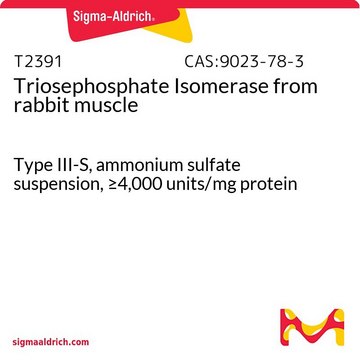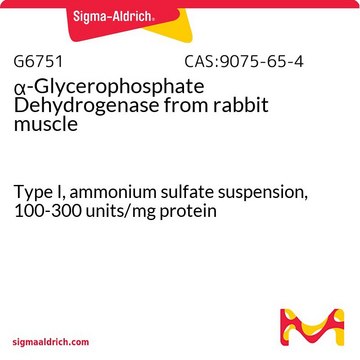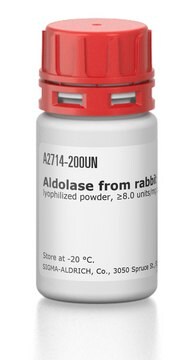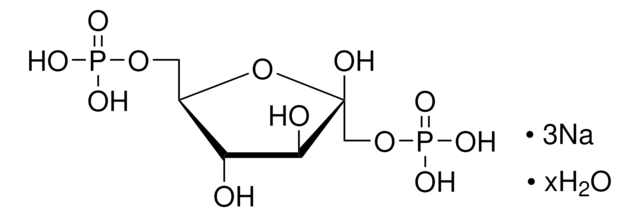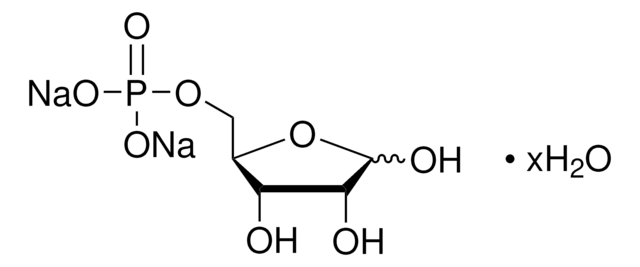G1881
α-Glycerophosphate Dehydrogenase-Triosephosphate Isomerase from rabbit muscle
Type III, ammonium sulfate suspension
Synonyme(s) :
GDH/TIM, α-GDH-TPI
About This Item
Produits recommandés
Source biologique
rabbit muscle
Niveau de qualité
Type
Type III
Forme
ammonium sulfate suspension
GDH activity
75-200 units/mg protein (biuret)
TPI activity
750-2000 units/mg protein
Température de stockage
2-8°C
Vous recherchez des produits similaires ? Visite Guide de comparaison des produits
Catégories apparentées
Description générale
α-Glycerophosphate Dehydrogenase-Triosephosphate isomerase (α-GDH-TPI or GDH/TIM) is an enzyme mixture of α-glycerophosphate dehydrogenase (GDH) and triosephosphate isomerase (TPI).
Application
Actions biochimiques/physiologiques
Conditionnement
Définition de l'unité
Forme physique
Code de la classe de stockage
12 - Non Combustible Liquids
Classe de danger pour l'eau (WGK)
WGK 2
Point d'éclair (°F)
Not applicable
Point d'éclair (°C)
Not applicable
Faites votre choix parmi les versions les plus récentes :
Déjà en possession de ce produit ?
Retrouvez la documentation relative aux produits que vous avez récemment achetés dans la Bibliothèque de documents.
Les clients ont également consulté
Articles
Instructions for working with enzymes supplied as ammonium sulfate suspensions
Notre équipe de scientifiques dispose d'une expérience dans tous les secteurs de la recherche, notamment en sciences de la vie, science des matériaux, synthèse chimique, chromatographie, analyse et dans de nombreux autres domaines..
Contacter notre Service technique